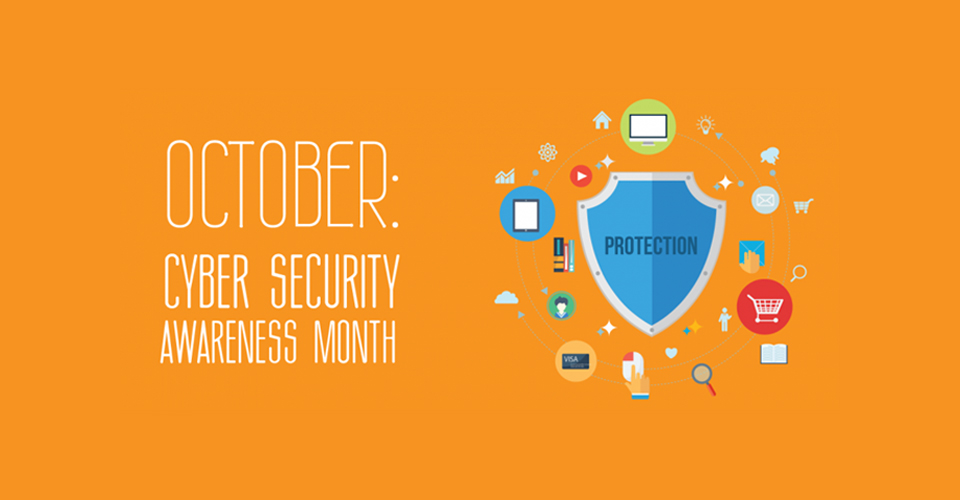October is Cyber Security Awareness Month, an annual campaign to raise awareness about the importance of cybersecurity. The internet touches almost every aspect of our daily lives and data security is critical. Throughout the month, we will release tips on how to make your electronic devices more secure. In addition, we have partnered with Skillsoft to offer two cyber security courses: Global Privacy and Information Security and Privacy and Information Security.
Tip One - Lock down your login: Your usernames and passwords are not enough to protect key accounts like email, banking and social media. Strengthen online accounts and use strong authentication tools – like biometrics, security keys or a unique one-time code through an app on your mobile device – whenever offered.
Tip Two - Keep a clean machine: Keep all software on internet-connected devices – including personal computers, smartphones and tablets – current to reduce risk of infection from ransomware and malware.
Tip Three - When in doubt, throw it out: Links in email, tweets, posts and online advertising are often how cybercriminals try to compromise your information. If it looks suspicious, even if you know the source, it's best to delete or, if appropriate, mark it as junk.
Tip Four - Back it up: Protect your work by making an electronic copy and storing it safely. If you have a copy of your data and your device falls victim to ransomware or other cyber threats, you will be able to restore the data from a backup.
Tip Five - Share with care: Think before posting about yourself and others online. Consider what a post reveals, who might see it and how it might affect you or others.
Tip Six - Personal information is like money. Value it & protect it: Information about you, such as purchase history or location, has value – just like money. Be thoughtful about who gets that information and how it is collected by apps, websites and all connected devices.
Tip Seven - Lock your computer, don't log off: Press Ctrl + Alt + Delete and choose “Lock”. Press Ctrl + Alt + Delete again and the initial login screen appears. Press the Win + L key to lock your computer. As soon as you press Win + L again, the initial login screen appears.
Tip Eight - Be aware of email red flags: Be suspicious of unknown senders, irrelevant subject lines, sent at an unusual time, content contains bad grammar and/or spelling errors, hyperlinks and attachments.
Tip Nine - Work login versus personal login: Use your @neomed.edu login for NEOMED systems and your personal login (@gmail.com, @yahoo.com, @hotmail.com, etc) for personal business such as Facebook, Twitter, Amazon, etc. If you must use your @neomed.edu login for personal sites, never use the same password you use for NEOMED systems.
Tip Ten - Clues to identify phishing include: request for your username and password, threat that you will lose something if you don't act in a timely manner, notification that your computer or device is infected and/or broken, incorrect grammar and/or spelling, a link that will solve your problem and a cost for solving your problem. NEOMED will never ask for your ID and password in an email or a phone call.
